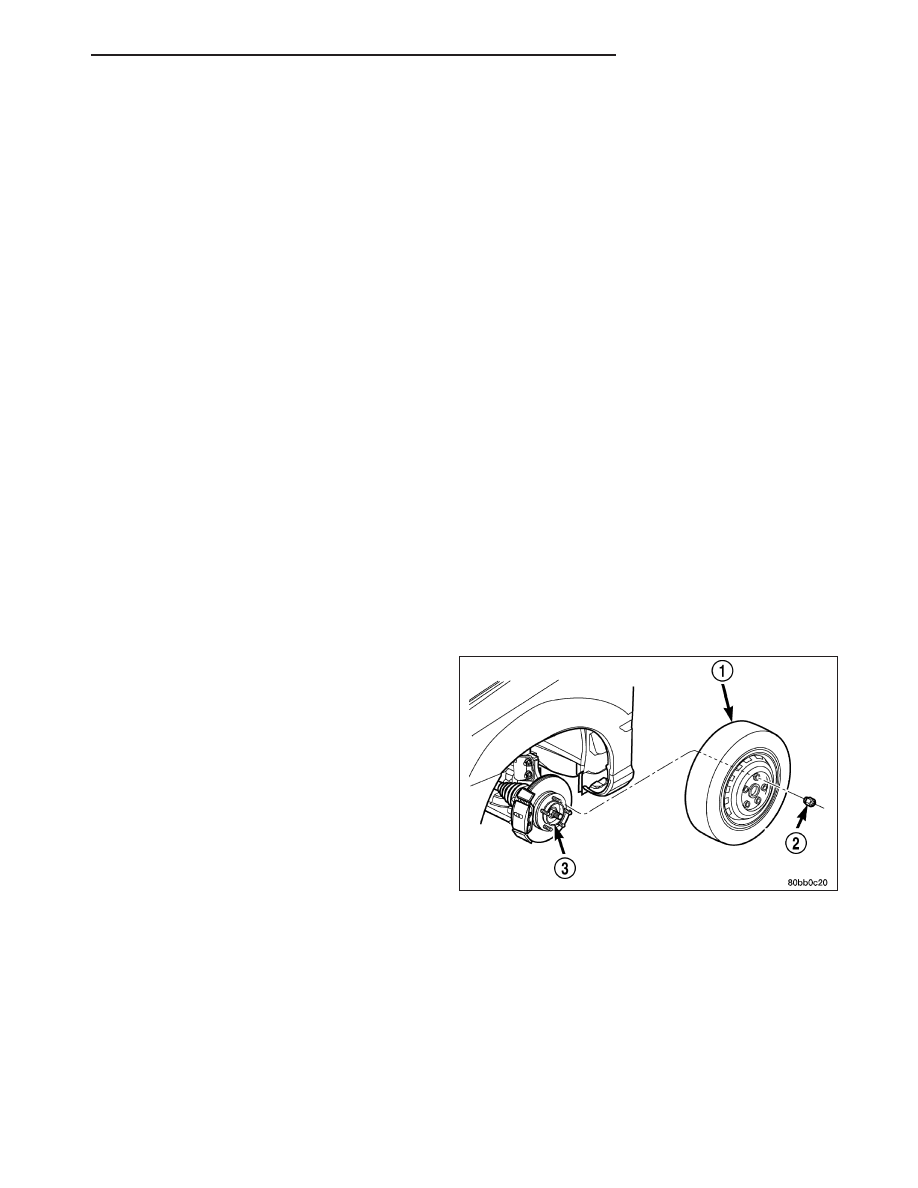Dodge Caliber. Manual - part 32

2. Damaged outer CV or inner tripod joint seal boot or seal boot clamps, which is evident by the presence of
grease slung outward from the joint. This will result in the loss and/or contamination of the joint grease, resulting
in inadequate lubrication of the joint.
3. Noise may also be caused by another component of the vehicle coming in contact with the halfshafts.
CLUNKING NOISE DURING ACCELERATION
This noise may be a result of one of the following conditions:
1. A torn seal boot on the inner or outer joint of the halfshaft assembly, which is evident by the presence of grease
slung outward from the joint. This will result in the loss and/or contamination of the joint grease, resulting in
inadequate lubrication of the joint.
2. A loose or missing clamp on the inner or outer joint of the halfshaft assembly. This may be accompanied by the
visible loss of grease.
3. A damaged or worn halfshaft CV joint. Isolate the noise to one side of the vehicle. Replace only the affected
side. Replacing both halfshafts is not necessary.
SHUDDER OR VIBRATION DURING ACCELERATION
1. A worn or damaged halfshaft inner tripod joint. Isolate the condition to one side of the vehicle. Replace only the
affected side. Replacing both halfshafts is not necessary.
2. A sticking tripod joint spider assembly (inner tripod joint only). Isolate the condition to one side of the vehicle.
Replace only the affected side. Replacing both halfshafts is not necessary.
3. Improper wheel balance.
VIBRATION AT HIGHWAY SPEEDS
1. Foreign material (mud, etc.) packed on the backside of the wheel(s).
2. Out of balance front tires or wheels.
3. Improper tire and/or wheel runout.
REMOVAL
CAUTION: Boot sealing is vital to retain special
lubricants and to prevent foreign contaminants
from entering the CV joint. Mishandling, such as
allowing the assemblies to dangle unsupported, or
pulling or pushing the ends can cut boots or dam-
age CV joints. During removal and installation pro-
cedures, always support both ends of the halfshaft
to prevent damage.
CAUTION: The halfshaft, when installed, acts as a
bolt and secures the front hub/bearing assembly. If
vehicle is to be supported or moved on its wheels
with a halfshaft removed, install a PROPER–SIZED
BOLT AND NUT through front hub. Tighten bolt
and nut to 244 N·m (180 ft. lbs.). This will ensure that the hub bearing cannot loosen.
1. Disconnect battery negative cable.
2. Place transaxle in gated park.
3. Raise vehicle on hoist.
4. Remove wheel and tire assembly (1).
PM
HALF SHAFT-FRONT
3 - 3